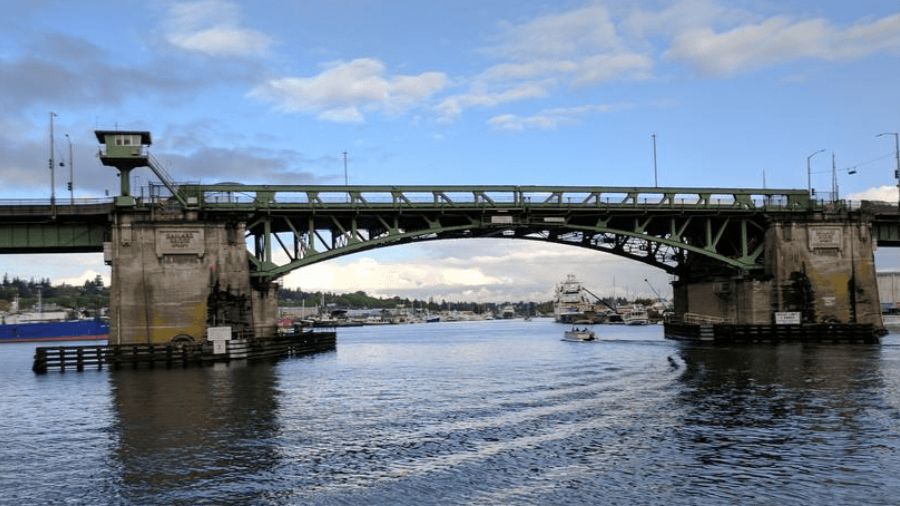Boulders return to prevent homeless camps along WA highways
Jan 12, 2023, 5:04 AM

The City of Tacoma installed boulders on city property in 2015, only to remove them after a public outcry. (成人X站 Newsradio/Chelsea Hawkins)
(成人X站 Newsradio/Chelsea Hawkins)
Let’s talk about boulders — specifically, the use of boulders to prevent homeless camps from returning to sites along freeways and highways. Once thought inhumane, boulder use is gaining momentum as a deterrent.
I was shocked to find the massive homeless encampment in Delta Park, just off I-5 in Portland, empty when I drove through on Friday. It has been there for years, just across the Columbia River from Vancouver. It had wood buildings, several cars, and generators the last time I went through in September.
But last month, the camp was removed. The site was cleaned, and hundreds of large boulders were installed to prevent the camp from returning. It’s called “aggressive landscaping” by the , which owns the property.
I had thought the use of boulders had been removed from Washington state’s toolbox. You might remember that the City of Tacoma installed them on city property in 2015, only to remove them after a public outcry. In 2017, Spokane was going to do the same thing, but residents stopped the plan before it started.
Public outcry over Tacoma鈥檚 anti-homeless boulders forces city to reconsider
But boulders are back.
On our drive home, I noticed that the Washington State Department of Transportation had installed them at a homeless camp on the west side of I-5 at Lilly Road in Olympia. WSDOT also put them in along SR 285 in Wenatchee last year.
I asked WSDOT’s Barbara LaBoe about boulder use and whether it will happen more often going forward.
“It’s not the first tool,” LaBoe said.聽“It’s not the first go-to.聽It’s not a standard practice.”
But placing boulders is part of the tool kit when it comes to keeping these areas near freeways and highways clear.
“Sometimes we fence, and sometimes we do vegetation removal,” LaBoe said.聽“In certain cases, we do place a large boulder that makes it less attractive to resettle in that site.”
I asked LaBoe why the state doesn’t use the boulders more often.聽“The boulders can be quite expensive, and placing them can be very time-consuming and expensive,” she said.
So what made the site under Lilly Road in Olympia a good candidate?
“It was really to block access up under the bridge,” she said.聽“Our crews need to get up there to inspect the bridge and make repairs. We don’t want anything being undermined by the bridge.”
That site used all three tools to prevent people from coming back, installing fencing, and removing vegetation and boulders.
Keeping these sites clear is part of the ongoing “” working to remove people from state property along freeways and highways in five of the largest counties.
In under a year, the state and a lot of private partners have worked with 13 large encampments. Five have been cleared. The rest are waiting to be cleared as outreach workers try to find housing for each resident.
LaBoe said they have found success with this model so far.
“225 people have accepted housing and 94% of them are still in housing,” she said.
Not a huge number, certainly, but it is a positive step in this problem.
The state wants to expand this model to all the homeless encampments on right of ways in all 39 counties, but that will take more money. Funding for that is part of the Governor’s $4 billion plan unveiled on Tuesday.












